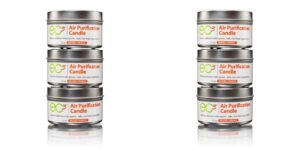
In recent years it has come to light that many areas of the U.S. have poor water quality. In Flint, Michigan lead pipe corrosion contaminated the water supply and now there are detectable amounts of lead and arsenic. After the water crisis in Flint, tests conducted by towns across the United States have shown detectable amounts of lead and arsenic in their drinking water. One way to rid the water of contaminants is to filter your water. Finding a water purifier that is right for you and your water is important. Testing the quality of your water will help you determine which type of filter will work best for you.
Test Your Water
Testing your water quality is something you should do regardless if you think you have contaminated water or not. We use water in many different areas of our lives every day, you might be surprised by what you find. Contaminates like lead are odorless and colorless so it may not be obvious if your water is unsafe to consume.
Getting a home water test kit is a good place to start because it can give you instant results and let you know right away if you need a filter or should do further testing. Most home test kits can tell you if you have any bacteria, lead, nitrates, pesticides, chlorine, hardness, and pH in your water.
How to Pick a Good Water Purifier for Your Family
Once you test your water and find out what it is contaminated with, you can begin to look at filters and decide which type will work best for you. You can see on most packaging the certification of what each filter type removes. Make sure you buy a filter that will filter out all the contaminants that you need.
Pitcher Filters
Filter water pitchers are the most common type of water purifiers. Simply fill up the top of the pitcher and the water goes through a filter as it falls into the bottom of the pitcher. Keep it in your fridge until ready to drink, then pour out clean filtered water from the spout. These types of filters are so common because they are easy to use and have a long filter life. They also filter out most contaminants such as fluoride, chloramine, lead, and chlorine. Although, they only hold around 8 full glasses of water so are best suited for a family of 3.
Under Sink Water Filter
Under sink water filters, also known as reverse osmosis water filters, are the highest grade home water filters available. Depending on the pre-filters and post-filters of the system, the reverse osmosis systems have various stages. The more filters, the higher the stage of the system.
Reverse osmosis filtration systems can remove dissolved solids, dirt, rust, dust, chlorine, fluoride, sediment, arsenic, VOCs, pesticides, and many other contaminants. This system is installed under your sink and removes these contaminants at the source.
eFilters
When you need to find a good water purifier for your household, look no further than efilters.net. efilters.net has everything you need from home testing kits to water pitcher filters to even under sink filters. Check out efilters.net to find a water purifier that is perfect for your family.


